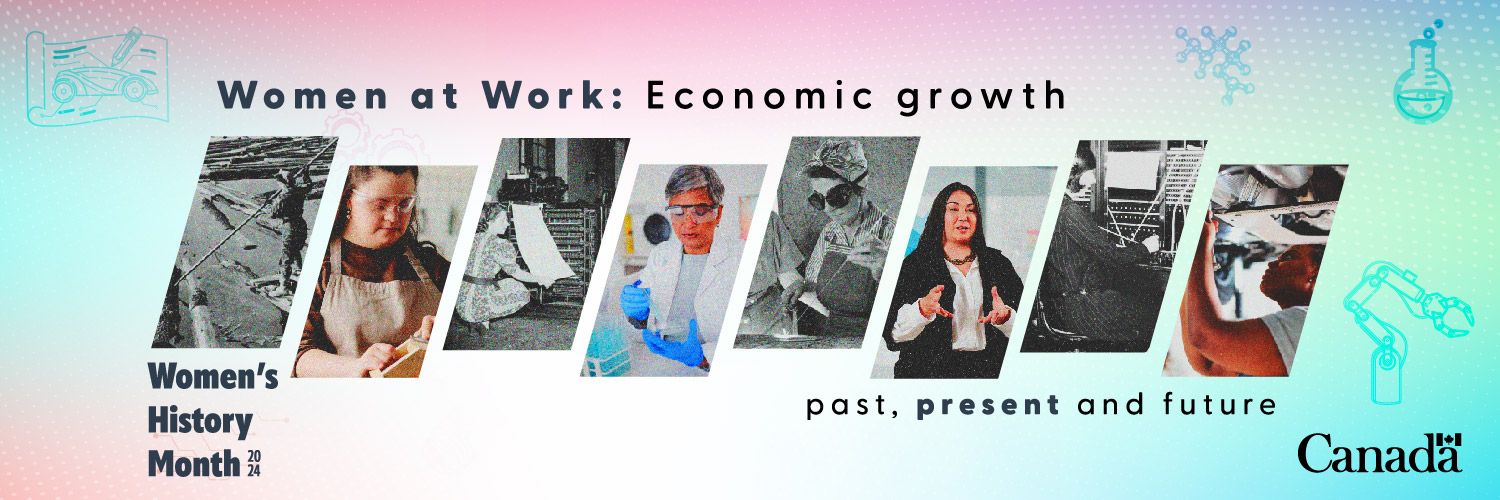
Demographic characteristics
- In 2021, more than 1 in 4 (25.8%) women aged 15 and older were part of the racializedFootnote 1 population, 27.1% were immigrantsFootnote 2, and 4.5% were IndigenousFootnote 3Footnote 4.
- Over the 2019-to-2021 period, 4.9% of women aged 15 and older reported being LGB+Footnote 5. Specifically, 1.2% of women were lesbian or gay, while 3.2% were bisexual. A higher share of young women (i.e., those aged 15 to 24; 11.1%) reported being bisexual than women aged 25 to 64 (2.7%) and 65 and older (0.3%)Footnote 6.
- There were 31,555 transgender women aged 15 and older in Canada in 2021, accounting for 53.1% of the transgender populationFootnote 7.
- In 2022, 3 in 10 (29.9%) women had a disability in Canada. Women (43.1%) were more likely to have a more severe disability than men (38.5%)Footnote 8.
Women's educational attainment
- Although women were under-represented in certain fields of study related to digital technologies in 2021, some groups were better represented than others. For example, women accounted for 1 in 3 immigrants (33.6%) and racialized people (33.9%) with a postsecondary credential in computer and information sciences, compared with approximately 1 in 4 Canadian-born (24.0%) and non-racialized (24.3%) people with a credential in this fieldFootnote 9.
- From 2010 to 2018, the proportion of women among Indigenous graduates was higher (72.1%) than among non-Indigenous graduates (61.8%). Among graduates with a bachelor's degree, women represented 81.0% of Inuit graduates, 75.7% of First Nations graduates and 68.3% of Métis graduatesFootnote 10.
Women in the economy
- Between 2007 and 2022, the average hourly gender wage gap narrowed among paid workers aged 20 to 54. Over this period, it narrowed the most between Indigenous men and women (by 8.0 percentage points) and Canadian-born men and women (by 5.9 percentage points) and the least among immigrants—regardless of age at arrival (by 2.7 percentage points)Footnote 11.
- Although the number of women inventors in Canada is lower than that of men inventors, the number of women inventors grew at a faster pace (by 14.3 percentage points) between 2005 to 2009 and 2015 to 2019Footnote 12.
Women in leadership positions
- Women's representation among elected members of Parliament and ministers appointed to federal Cabinet has increased over the past few decades. The proportion of elected women members of Parliament increased from 20.6% to 30.6% over the 1997-to-2023 period, while the proportion of women who are members of Cabinet doubled (from 24.3% in 2002 to 48.7% in 2023)Footnote 13.
- Close to three-quarters (73.5%) of senior management positions in majority women-owned businessesFootnote 14 were held by women in the first quarter of 2024—more than double the average proportion of women in senior management positions across all private sector businesses (35.6%)Footnote 15.
- Almost 1 million women were self-employed in Canada in 2022, representing 37.3% of the total self-employed population. In comparison, 26.3% of the self-employed population were women in 1976. Korean Canadian women had the highest self-employment rate among women in 2021, with 1 in 5 (19.9%) self-employedFootnote 16.
Women and their families
- For over a decade, the number of children per woman in Canada has been on a general downward trend, falling from 1.69 in 2009 to 1.43 in 2021Footnote 17.
- Women in Canada continue to receive parental benefits at a substantially higher rate than their partners, but the gap is narrowing. In 2022, the share of partners who claimed or intended to claim parental benefits reached 46.6%—the highest proportion since the Employment Insurance Coverage Survey (EICS) started collected information on maternity and parental benefitsFootnote 18.
Note to readers
For all data presented here from the 2021 Census, Canadian Community Health Survey, Canadian Survey on Disability, the Postsecondary Student Information System, as well as data related to elected members of Parliament and members of Cabinet, gender is the variable used, whereas data from the Labour Force Survey and Canadian Employer–Employee Dynamics Database use the sex variable. For the Canadian Survey on Business Conditions, respondents were asked to provide the proportion of employees of their business who are women and men.
Beginning in 2021, the census asked questions about both the sex at birth and gender of individuals. While data on sex at birth are needed to measure certain indicators, as of the 2021 Census, gender (and not sex) is the standard variable used in concepts and classifications. For more details on the new gender concept, see Age, Sex at Birth and Gender Reference Guide, Census of Population, 2021.
Given that the non-binary population is small, data aggregation to a two-category gender variable is sometimes necessary to protect the confidentiality of responses. In these cases, individuals in the category "non-binary persons" are distributed into the other two gender categories. For all data presented here from the 2021 Census, Canadian Community Health Survey, and 2022 Canadian Survey on Disability using the gender variable, the category "women" includes women, as well as some non-binary persons.
A fact sheet on gender concepts, Filling the gaps: Information on gender in the 2021 Census, is also available.